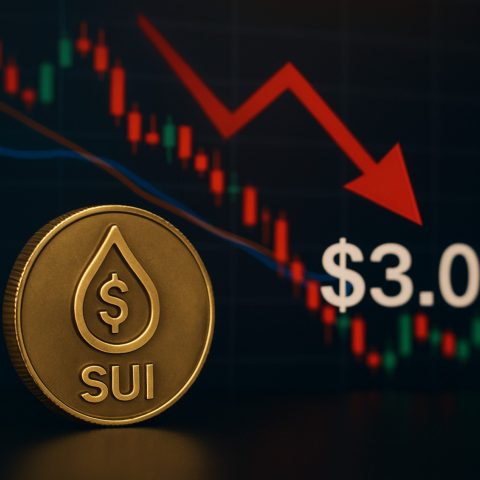The Current State of Bitcoin
Bitcoin has recently bounced back after a dip below the $100,000 threshold earlier today. Currently trading just above $101,000, this modest recovery follows a 3.7% decline in the past 24 hours, sparking interest among both investors and market analysts.
Key Insights on Support Levels
Analysts are now examining on-chain data and the behavior of short-term holders to predict Bitcoin’s next steps. Notably, Yonsei Dent from CryptoQuant emphasizes that short-term holders could significantly impact immediate support levels. His analysis suggests that the $89,900 mark is crucial for those who have held Bitcoin between one week and six months. Many of these holders are in profit, which could help maintain stability in the market against sudden sell-offs.
However, some holders within the three-to-six-month bracket are experiencing losses, although their market presence is limited, which lessens their ability to sway market trends dramatically.
Long-Term Trends and Market Dynamics
Additionally, Grizzly, another expert from CryptoQuant, sheds light on the changing dynamics between long-term and short-term holders. The current heating market has not seen a considerable rise in the SOPR ratio, hinting at a shift towards a more stable, long-term investment approach among traders. This trend indicates a maturation in Bitcoin’s market, with decreased speculative trading as institutional investments become more prominent.
With this evolution, Bitcoin may be entering a new era defined by extended holding periods and reduced price volatility.
The Broader Impact of Bitcoin’s Market Trends
As Bitcoin continues to capture attention with its fluctuating prices, its effects on society, culture, and the global economy are becoming increasingly significant. The recent rally above $101,000 is not merely a marker of investor sentiment; it represents a shift in the cultural perception of cryptocurrencies. Bitcoin is evolving into a mainstream asset class, attracting both retail and institutional investors who are paving the way for greater acceptance and integration into traditional financial systems.
This transformation is one of the key drivers of a decentralized economy, impacting how individuals save, transact, and invest. As more businesses consider accepting Bitcoin, the push towards a cashless society accelerates, fostering innovation in payment systems and financial services. The implications are profound: financial inclusion might improve as unbanked populations gain access to cryptocurrency markets.
However, the environmental effects of Bitcoin mining—a critical concern—cannot be overlooked. Bitcoin’s energy-intensive Proof-of-Work mechanism has raised alarms about its carbon footprint. The global industry is under pressure to adopt more sustainable practices, potentially leading to innovations in green technology.
The current trajectory suggests that Bitcoin may redefine its role within global markets, shaping long-term economic trends through regulatory scrutiny, technological advancements, and changing consumer preferences. This evolution could set the stage for Bitcoin to become a standard investment vehicle, reflecting both the opportunities and challenges faced by an increasingly digital world.
Bitcoin’s Resilience: Analyzed Trends and Investment Insights
The Current State of Bitcoin
Bitcoin has recently shown signs of resilience after recovering from a dip below the $100,000 threshold. As of now, it is trading just above $101,000 following a brief 3.7% decline in the past 24 hours. This recovery has sparked renewed interest among investors and market analysts, leading to a closer examination of Bitcoin’s support levels and market dynamics.
Key Insights on Support Levels
Recent analyses indicate that on-chain data and the behavior of short-term Bitcoin holders could significantly influence its price trajectory. Yonsei Dent from CryptoQuant has pointed out that the $89,900 level is crucial for short-term holders who have retained their assets for one week to six months. A majority of these holders are sitting on profits, which may create a buffer against sudden sell-offs and contribute to market stability.
Conversely, some short-term holders, particularly those in the three to six-month bracket, are facing losses. However, their numbers are comparatively small, suggesting that they may not possess enough power to drastically alter market trends.
Long-Term Trends and Market Dynamics
In addition, Grizzly, another expert from CryptoQuant, has provided insights into the evolving relationship between long-term and short-term holders. The observed lack of a significant rise in the Spent Output Profit Ratio (SOPR) signals a transition towards a more stable, long-term investment strategy among traders. This shift likely reflects the growing involvement of institutional investors, suggesting that the market is maturing.
As Bitcoin continues to evolve, it appears to be entering an era characterized by extended holding periods and reduced price volatility. This maturation may ultimately contribute to a more robust and stable cryptocurrency market.
Pros and Cons of Investing in Bitcoin
Pros:
– High Liquidity: Bitcoin is one of the most traded cryptocurrencies, ensuring high liquidity for investors.
– Growing Institutional Interest: The increasing participation from institutional investors adds credibility and potential price stability.
– Potential Long-Term Gains: As Bitcoin matures, long-term holders may see significant returns against inflation and traditional asset classes.
Cons:
– Market Volatility: Despite signs of stabilization, Bitcoin is still prone to price swings that can lead to significant losses in the short term.
– Regulatory Risks: Ongoing regulatory scrutiny from governments worldwide introduces uncertainty for the future of Bitcoin.
– Technological Vulnerabilities: As with any digital asset, Bitcoin faces security challenges, including potential hacks and flaws in the blockchain technology.
Future Predictions
Analysts predict that Bitcoin may continue to experience fluctuations as it reaches critical support and resistance levels. Market analysts suggest that sustained interest from both retail and institutional investors will be essential in stabilizing prices and fostering growth over the long term. As Bitcoin’s ecosystem evolves, innovative financial products linked to cryptocurrencies may further improve market stability.
For more insights and resources about cryptocurrencies, visit CoinDesk.







